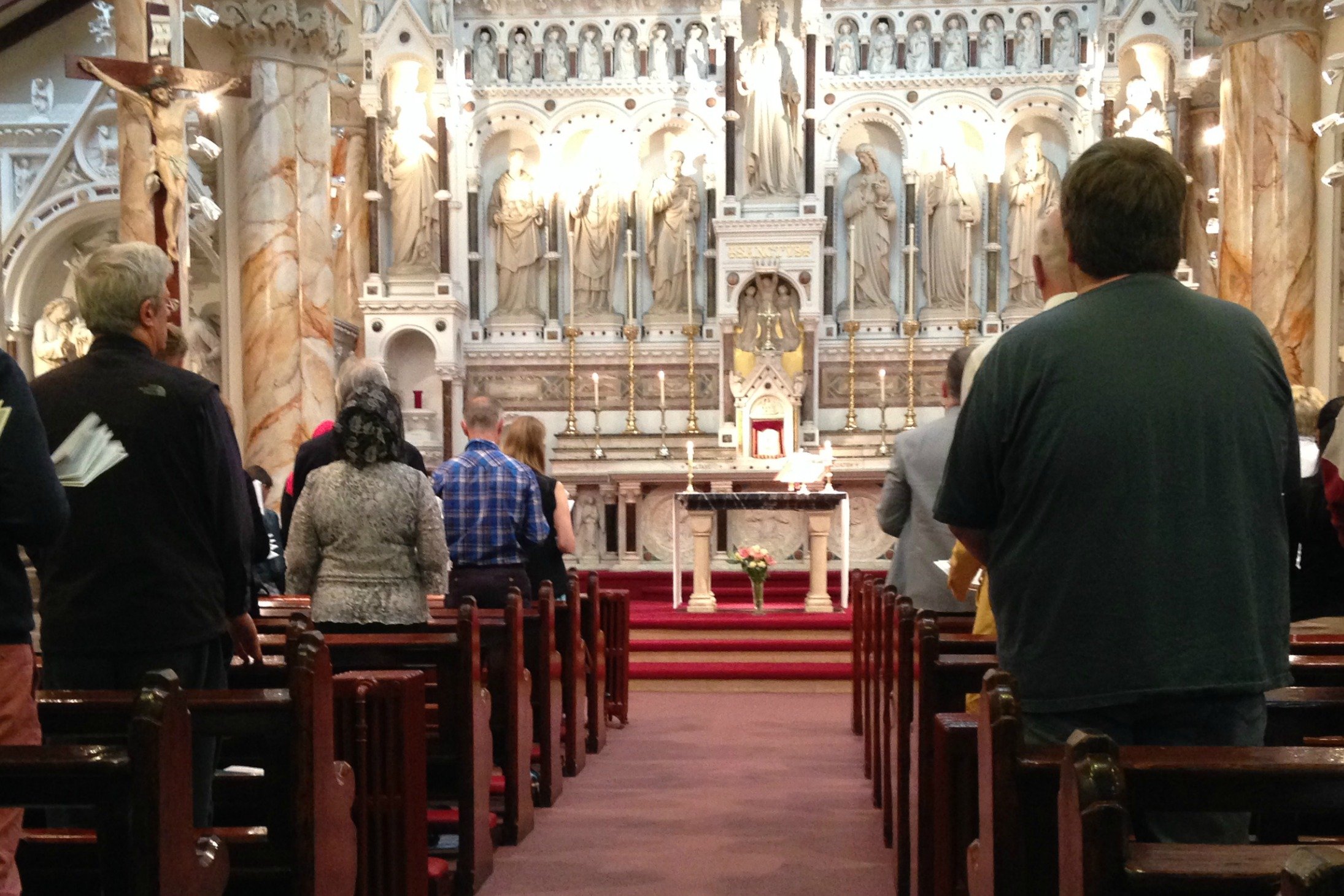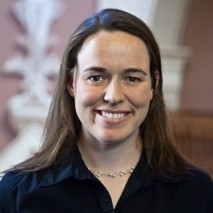Previously in this series: A Theology of Liturgical Evangelization, Part 1 and Part 2
Unleashing liturgy for the sake of evangelization requires an expansion of liturgical experience and an openness to talking about response to these experiences, as discussed in Part 2 of this series. However, adding liturgies outside the walls of the church or creatively inviting and opening liturgies to the unevangelized and/or unconcerned is not a solution. It’s merely setting conditions. Creating possibilities.
Liturgy is a participatory event, a social experience. As Aidan Kavanagh, OSB wrote, “That a ‘social occasion’ is repetitious and rhythmic means also that liturgy is unifying, for repetition and rhythm have this effect upon human assemblies for worse or better.”[1] Expanding the opportunities for the unconverted to experience liturgy won’t bring the full fruit of liturgical evangelization unless we in the assembly are also open to doing liturgy. Really doing liturgy. The liturgy that “happens only in the rough and tumbled landscape of spaces and time which people discover and quarry for meaning in their lives.”[2] This means that we ourselves are continually evangelized anew. This is what makes liturgical evangelization not just about the un-initiated, but a reality permeating the full process of evangelization, from witness to fruits. To participate in this grace on a regular basis takes discipline—discipline that enables us to be overflowing disciples.
Discipline and discipleship share the same root, disciple—one who is a learner, an adherent. In On Liturgical Asceticism, David Fagerberg describes asceticism [the practice of askesis/disciplines, or discipleship] as the third leg of a tripod—the other two legs being liturgy and theology. This tripod, rooted in monasticism, conforms one to the image of Christ, who offers perfect worship to the Father. One cannot do authentic liturgy without all three legs.
But what about authentic liturgical evangelization? While monasticism is certainly important, it should not be the only or privileged source for what ascetical disciplines constitute our discipleship. The practices of Paul, Stephen, Peter, Timothy, Titus, Barnabas, Junia, Phoebe, Priscilla, and Lydia—these also reveal disciplines such as sharing the Gospel, serving those in need, and spiritual giving. These disciplines “make us combustible” just as monastic disciplines do.[3] In this asceticism turned outward, we grow in communion with the Trinitarian God, especially through our yielding to the Holy Spirit that moves ever outward. In yielding to the Holy Spirit, yes—some are called to monastic discipleship, but others are called to specific disciplines that move outward, that make liturgical evangelization a single reality through our own example, our own witness.
As Timothy O’Malley writes in Liturgy and the New Evangelization: Practicing the Art of Self-Giving Love, liturgical prayer “inspires the Christian toward a mysticism of the ordinary, to an offering of the return gift of our very lives as an act of love.”[4] Our lives as an act of love—in the preaching of salvation, in mercy and care for those in need, in giving of our own resources for God’s use—these disciplines flowing from liturgy inspire the critical question when it comes to liturgical evangelization: what happened? Liturgical prayer that does not inspire this “mysticism of the ordinary” and offering of one’s life “as an act of love” is liturgy without the crucial what happened? It’s liturgy without subjective response. It’s liturgy separated from liturgical evangelization. When the world sees a person who experiences during or emerges from liturgy in such a way that demonstrates something happened, the crucial question has been encouraged. To use Fagerberg’s language, “a brow has been furrowed.”
Once set in motion, disciplines/askesis grow in the lives of the evangelized. As Kavanagh writes:
it seems that what results in the first instance from such an experience [of authentic liturgy] is deep change in the very lives of those who participate in the liturgical act. And deep change will affect their next liturgical act.[5]
For the full experience and effects of liturgical evangelization to blossom, believers must be formed in disciplines leading to and flowing from the liturgy—monastic ones as well as apostolic ones. We must never think that the “goal” in pastoral ministry is to produce “perfect Christians” consumed to the point of idolatry with one’s own prayer life, guarding virtues, or preserving Catholic identity (there are more idols than one could name!). Discipleship points outward, and the blessing of the Holy Spirit is that every deep change affects the next liturgical act—a supernaturally empowered, growing wave of “our very lives as an act of love” manifested in the ordinary, but especially in the sharing of the Gospel of Jesus Christ in word and deed, and in the worship proper to all believers.[6] Kavanagh wonders if a reason “why we never seem to get around to doing much evangelization” is that:
We find, when we look into the face of an adult who comes to us from the world of systemic abnormality to ask what we are doing, that we cannot think of much to say . . . None shiver when we enter a room. Indeed, few notice.[7]
Sadly, a version of this can happen in liturgy as well. Experiencing liturgy can not only fail to inspire a proper “shiver” or “brow furrow,” but it can be like “wad[ing] into a cold swimming pool”—or worse, being plunged into the deep end, utterly alone.[8] When we as the assembly do not partake in the askesis that makes us combustible, when we as the assembly resist the real, raw experience that is dangerous in that it changes us, the unevangelized will not only not ask “what happened?” but they will not realize that the subjective response of cooperation with the grace that transforms is normative for doing inherently evangelistic liturgy.
Kavanagh goes on to explain, “one learns to recognize the signals an assembly of faithful people gives off when, in a liturgical event, it begins to change palpably into something it was not when the event began.”[9] Recognize. Palpable. This is precisely what my family and friends experienced during the Mass and Baptism of my second child. Yes, they were plunged into the deep end of a pool—but it was a deep end packed with swimmers. We are social beings. Seeing others transformed through authentic liturgical evangelization made it acceptable for them to come and see. To come and experience. To let themselves go, just enough, for the Holy Spirit to do liturgy. To do evangelization. To warm their hearts in a new way. It’s not something invisible—it can be recognized; it’s palpable. We can talk about it.
When we are formed and challenged by the disciplines that enable us to be Church—to do liturgical evangelization, our lives beg the question “what happened?” and, of equal importance for full liturgical evangelization, we overflow with response revealing the boundless sacrificial love of Christ that inspires and empowers our own lives as disciples, within liturgy and in the ‘liturgy after the liturgy.’ Envisioning liturgical evangelization as a powerful, unified movement of the Church forces us to confront our relatively blasé expectations and replace them with the fullness of liturgy unleashed and experienced through the disciplines that make us combustible.
![]()
Featured Photo: J.L. Wong; CC BY 2.0
[1] Aidan Kavanagh, OSB, On Liturgical Theology (Collegeville: The Liturgical Press (Pueblo), 1984), 139.
[2] Ibid.
[3] Fagerberg, On Liturgical Asceticism (Washington, DC: The Catholic University of America Press, 2013), Appendix A #38.
[4] Timothy O’Malley, Liturgy and the New Evangelization: Practicing the Art of Self-Giving Love (Collegeville: The Liturgical Press, 2014), 4.
[5] Kavanagh, On Liturgical Theology, 73.
[6] O’Malley, Liturgy and the New Evangelization.
[7] Kavanagh, On Liturgical Theology, 170–171.
[8] Example adapted from Fr. Michael White, http://nativitypastor.tv/?p=2042
[9] Kavanagh, On Liturgical Theology, 76.



